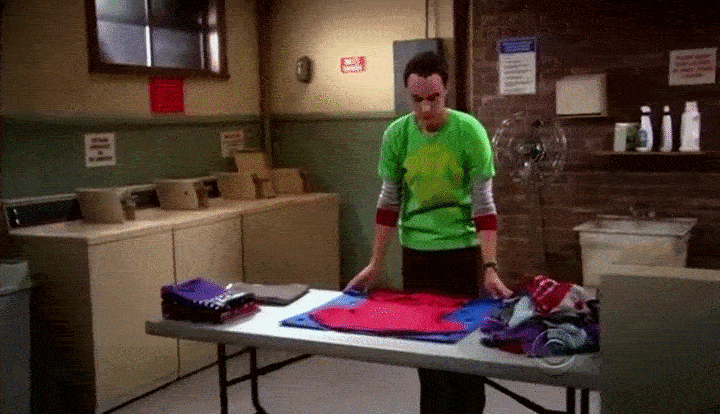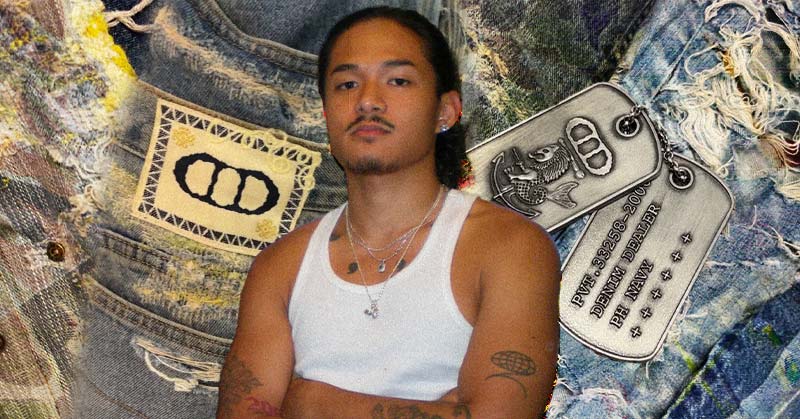The decision to don vintage apparel in the present musters an oxymoron of sorts, with items being modernly vintage. Wearing vintage may not only constitute head-turning—witnessing one-of-a-kind garments but reflects personal expression and sophistication. Sporting vintage apparel dated ten, twenty, or even thirty years in the past places history and sustainable utility on a piece of fabric.
The demand for vintage draws beyond what is slated on the piece, as the intrinsic value is infused in story, prevailing throughout the years. With time and the naturals playing the opposition, it best to make the most out of these gems—through proper care and wear.
In choosing to care for your remnants of the past, we’ve reached out to several gurus who know a thing or two on how to care for vintage apparel.
Washing and drying

Photo caption: Make sure to care for your delicates
Bleach should always be the last resort for stain removal for white pieces, as they have the possibility of dissolving cotton items. The usual go-to alternatives of the vintage community are OxiClean and LA’s Totally Awesome Cleaner, as lesser intense alternatives.
In terms of washing vintage shirts, we only do hand wash because they’re delicate and are prone to tear; it’s best to wear them from time to time to avoid dry rot, which is common for old fabrics.
Taking care and washing of vintage luxury clothes is complicated because some of them already have stains on them straight from the ukay (thrift) and it also depends on what material the clothes are. Some of it is as delicate as sentimental so sometimes it requires special care and a lot of love. If it's a minor issue like a foul smell or some minimal dirt on the garment, the best thing to do is just hand wash it with some detergent and let it air dry.
Some of it I don't personally touch and let my mom or wife take care of it because for some reason they know best how to remove it (i.e. yellow stains, etc.) and sometimes I just leave the stain as it is to give the garment more of a “vintage look.” I like to keep them hung inside our store at normal room temperature instead of folded just to prevent having that fold marks on the garment and make it look more presentable.
@modamnl, @naturally.equipped, @setenta___, @stuck.in.seventies
Garments that are 30 years or older have fabrics that become soft and delicate due to usage, which makes taking good proper wash care with utmost importance. General Wash Care such as the use of lukewarm to cold water, hand washing them, and using OxiClean or colored bleach to remove the stains from the clothes. We recommend alternative and organic remedies pre-wash such as using a mixture of apple cider vinegar, baking soda, detergent, and water for cleaning tough stains.
After washing, we usually avoid as much as possible stretching or distorting the fabrics of the garments so we sometimes use a dry towel and let them dry laying down under the sun, or in terms of washing denim, we roll the towel. We recommend lightly drying without wringing out before hanging the clothing to avoid stretching.
Wash them. You just have to check the material of the shirt. Not all vintage shirts are safe to machine-wash. Check how thin the fabrics are, remember that these garments were used and may have been stored a long time in dressers and may have altered the strength of their fabric. So our recommendation for washing these garments, hand wash. or for really fragile shirts, soaking it with a little bit of detergent should be enough to clean it, or sanitize it to be worn. Unless the shirt you have is fragile or brittle and you don’t have any intentions of wearing it, just leave it as is.
Though some are safe to be washed by machine or some are hand washed. Our recommendation for drying is to just wring it gently and air dry it. Gently wringing the shirt before hanging it dry ensures the weight of the water does not pull the shirt down and change its shape.
Using a spin dryer may stretch the shirt so much that necklines and shoulder width may change, as it may cause some shirts to shrink. Use at your own risk.
Folding or Hanging?

Photo caption: So, are you a folder or a hanger?
On the topic of hanging or folding your clothes to store. A rule of thumb I follow is if it’s an item for sale or a frequent rotation piece it should be fine to hang it but otherwise keep it folded. Hanging tops for a long time, especially for shirts had a chance of loosening the collar which some don’t want.
@modamnl, @naturally.equipped, @setenta___, @stuck.in.seventies
It's preferred by many vintage enthusiasts to fold their clothes when not to be displayed or to be sold to maintain their shape and condition. However, if hanging is the preferred choice, we recommend shooting or inserting the hanger from the bottom outside hem to the neck hem and not vice versa for keeping the garment (and its neckline) in good condition.
I used to believe that hanging shirts are the best way to store in dressers and a great way to showcase/display these shirts. But prolonged hanging causes the shirts to be stretched along the shoulder to the neckline area. We recommend that, if you have shirts that are hung on display, fold them every once in a while. That’s one of the reasons why you see most vintage stores in other countries, such as Japan has shelves where you can see that shirts are stacked and folded. It’s a space saver and it ensures that the shirts keep their original shape and form.
Storage

Photo caption: Humidity is your biggest foe
As much as possible, we do not hang shirts for long periods, this causes unwanted stretches and deformity in the shape of clothes. Best to fold and store it safe from molds and rotting. Storage-wise, we just try to keep our cabinets cool and dry. Same with sneakers as moist areas are bad for both.
@modamnl, @naturally.equipped, @setenta___, @stuck.in.seventies
Keep your vintage clothing in a cool dry place such as a drawer or cabinet by hanging them with space from one another or folding them to protect your vintage garments from overlong exposure to moisture, which leads to dry rot.
There isn’t a straightforward method that may be more effective than the next, but what is important is that you get regular wear out of the pieces. Likened to other tees and jackets, feel free to place them in a closet or on a hanger, though what matters is that you use such tees—given that being their intended utility.
Storing shirts at the right place and moisture matters. The best way is to keep your shirts in a place where it's not humid. The best example, is for white shirts, if you keep them in your dresser for too long. You’d notice it develops yellow spots/stains. It just means that it hasn’t been cleaned well before storing them. So ensure you’ve cleaned them well to avoid oxidation. The best places to store vintage shirts are in plastic containers with clip-on covers—the best way to avoid moisture, dust, mold, and mildew.










